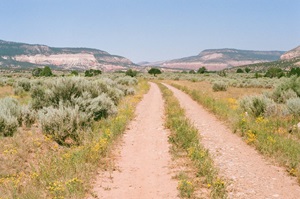Burnout is an all-too-common issue among clergy. Many pastors overlook the signs of exhaustion and continue in day-to-day ministry as if nothing is wrong, placing additional stress on themselves and their congregations. Determining when it's time to step away from ordained ministry for spiritual renewal can be a difficult but necessary decision.
The Rev. Greg Pimlott addresses this challenge in his book, Pastoral Pause: A Practical Guide to Renewal Leave, where he shares insights and lessons learned from his own experiences with taking time for spiritual restoration.
“I was experiencing the signs of burnout and realized I needed to take renewal leave before things got worse. I didn’t have a lot of resources to guide me through the process. Afterwards I decided to write a book for pastors and churches to utilize so they wouldn’t be starting from scratch like me,” said Pimlott.
Look for the Signs of Burnout
Clergy do themselves—and their congregations—no favors by pretending everything is fine when it’s not. In his book, Rev. Pimlott uses the metaphor of a boiling frog to describe how burnout creeps in. Pastors might not recognize the early warning signs, but over time, their duties can become increasingly difficult and less fulfilling. Watch for symptoms such as:
- Avoiding social interactions with congregants or guests because they feel stressful or draining
- Difficulty preparing or delivering sermons
- Neglecting spiritual disciplines such as prayer or scripture reading
- Feeling like one is simply going through the motions of ministry
- Skipping personal time or family commitments, or developing unhealthy habits like overeating, lack of exercise, or poor sleep
Make a plan
When considering renewal leave, pastors should begin the conversation at home. Spouses or children may notice signs of burnout even before the pastor does. The next step is to speak with the district superintendent, who can help develop a plan that ensures continuity in ministry during the leave.
Once the superintendent is on board, it’s time to engage congregational leadership, particularly the Pastor-Parish Relations Committee and the Church Council. Their support is critical. Entering the renewal period with the confidence that the congregation is behind them allows pastors to focus fully on restoration. Pastors will feel much more comfortable stepping away from a little while when they know they have full support of their church.
“By the time the pastor presents the idea of renewal leave to the entire congregation, the key leaders need to be standing beside them showing their support,” said Pimlott.
Planning a renewal leave can take months. Pastors and congregations must agree on a timeline. If the pastor plans to travel, they’ll need to make appropriate arrangements for themselves and their families. Grants may be available to help offset expenses. Pimlott’s book includes a suggested checklist to guide pastors through the planning process.
Churches must also plan for how pastoral duties will be handled in the interim. If the church has multiple pastors, redistributing responsibilities might be straightforward. Single-pastor churches may need outside help, and district superintendents can assist in finding a temporary replacement. Options vary by conference but may include retired pastors, lay supply pastors, or others not in full-time appointments.
Use the time wisely
While there should be moments of fun and rest, a renewal leave is more than just an extended vacation. Its purpose is to return spiritually and mentally refreshed, having rediscovered the joy and depth of their pastoral calling.
“My soul was missing out on some things that once brought it joy and I needed to find a way to get them back. Renewal leave is a lot fun, but it’s also a lot of work,” said Pimlott.
He encourages pastors to use the time to reconnect with God and reengage in spiritual disciplines like prayer. In his book, he recounts a moving moment during a visit to Christ in the Desert Monastery in New Mexico.

“One of the monks encouraged me walk across this bridge down the road and look for rattlesnakes. I didn’t understand why he suggested I look for snakes, then as I got to the bridge, I had an epiphany that reaffirmed my calling. The bridge crosses a section of the river with rapids, so I sat down to watch and listen. My ministry, up to this point, was like the water approaching the bridge from upriver. In that moment I knew God had led me this far and I had faith God would guide me through my ministry still ahead. I hope all pastors going on renewal leave will experience these moments of clarity and rekindling of their call,” said Pimlott.
Plan for the Return
Reentry after renewal leave can present its own challenges. Plan to make the first Sunday back a time of celebration. A potluck, party, or even an event with live music can help the congregation express joy in welcoming their pastor home.
While congregants will be eager to hear about the renewal period, Pimlott advises against sharing everything at once. Give time and space for reflection. Insights gained during the leave may serve as powerful material for future sermons or small group studies.
Conclusion
Renewal leave can be a transformative opportunity for pastors who feel depleted or disconnected from their calling. Yet many never pursue it—either out of guilt about stepping away or uncertainty about how to begin. Pimlott’s book offers a practical roadmap for planning a renewal leave and outlines ways congregations can support their pastors in taking this important step toward health and wholeness.
This content was produced by ResourceUMC on May 25, 2025. Greg Pimlott is the pastor of Christ United Methodist Church in Indianapolis. You can buy his book, “Pastoral Pause: A Practical Guide to License to Renew,” at the Upper Room online bookstoreUpper Room online. Philip J. Brooks is a writer and content developer for United Methodist Church Communications. Contact him by e-mail .

